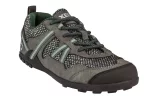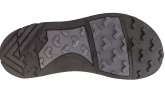Hi, Annie; thank you for your kind words.

There is an association with Plantar Fasciitis (PF) and Heel Spurs, but the association does not mean that they are caused by PF. Because the same types of conditions which cause PF can also be responsible for the increased calcification which builds up a bone spur, it is difficult to assign blame to PF as a sole causative agent. There are, after all, a lot of folks with Heel Spurs who have no PF.
However, I would imagine that if one develops PF, that the inflammatory response could increase the likelihood that Heel Spurs might develop.
There are some identifiable risk factors associated with Heel Spurs (HS). These same risks can also be found to be associated with PF, so you can understand why things can be blurred as to whether one condition can be responsible for the other problem.
- Motion control issues abnormalities with walking, like pronation, which can put abnormal stresses on the heel bone, ligaments, and nerves near the heel
- Heavy foot impact exercise like running, especially when done on hard surfaces like pavement and concrete and hard-packed dirt and gravel.
- Shoes which fit poorly and footwear that is worn down.
- Footwear which does not properly support weak foot structures, like the arch.
- Being over weight and obese.
Many of the same exercises to help with PF prevention and PF relief are also ones that can be used to try and treat Heel Spurs. Surgical intervention in cases that become increasingly aggressive is more frequently done than a surgery to deal with PF.
It is interesting to note that a good percentage of the population has some level of Heel Spur development, and that most cases do not produce symptoms which are bothersome. Which brings me to a bit of a controversial observation.
Bone Spurs are most often diagnosed by X-Ray imaging. X-Rays are often done when a patient complains of foot pain symptoms that are shared by both HS and PF. It has been debated that because both BS and PF are frequently diagnosed at around the same time, that Podiatrists and Orthopedists will wrongly attribute heel discomfort -- in many cases -- to HS, when the sole cause is more likely the PF.
And those on the other side of the debate will vigorously uphold HS as a pain causing agent.
I am one with HS's that showed up on X-Rays when my feet were examined for issues dealing with the metatarsals. The podiatrist asked if my heels were having pain, to which my answer was "no". Given that the HS's were more than just minimal, he expressed a bit of surprise. Later as I spent time looking at HS's and reviewing the existing literature, I became convinced that I was just like a lot of folks with this condition and could just ignore it. If my heels get painful and PF is nonexistent, then I'll be concerned.

Unless there is significant interference with normal functioning even with some mild discomfort, one can afford to be conservative in their approach to dealing with HS.
So, with your provider clued in to your condition and concerns and in agreement with your plans, you can use the aforementioned exercises to initially treat the HS. Also look at those things which create a risk for both HS and PF and focus on remediating them.
If that doesn't help resolve the issue, or at least keep it from becoming more aggravated, you can always get more aggressive treatment later.
My best wishes on things getting better for your feet






















